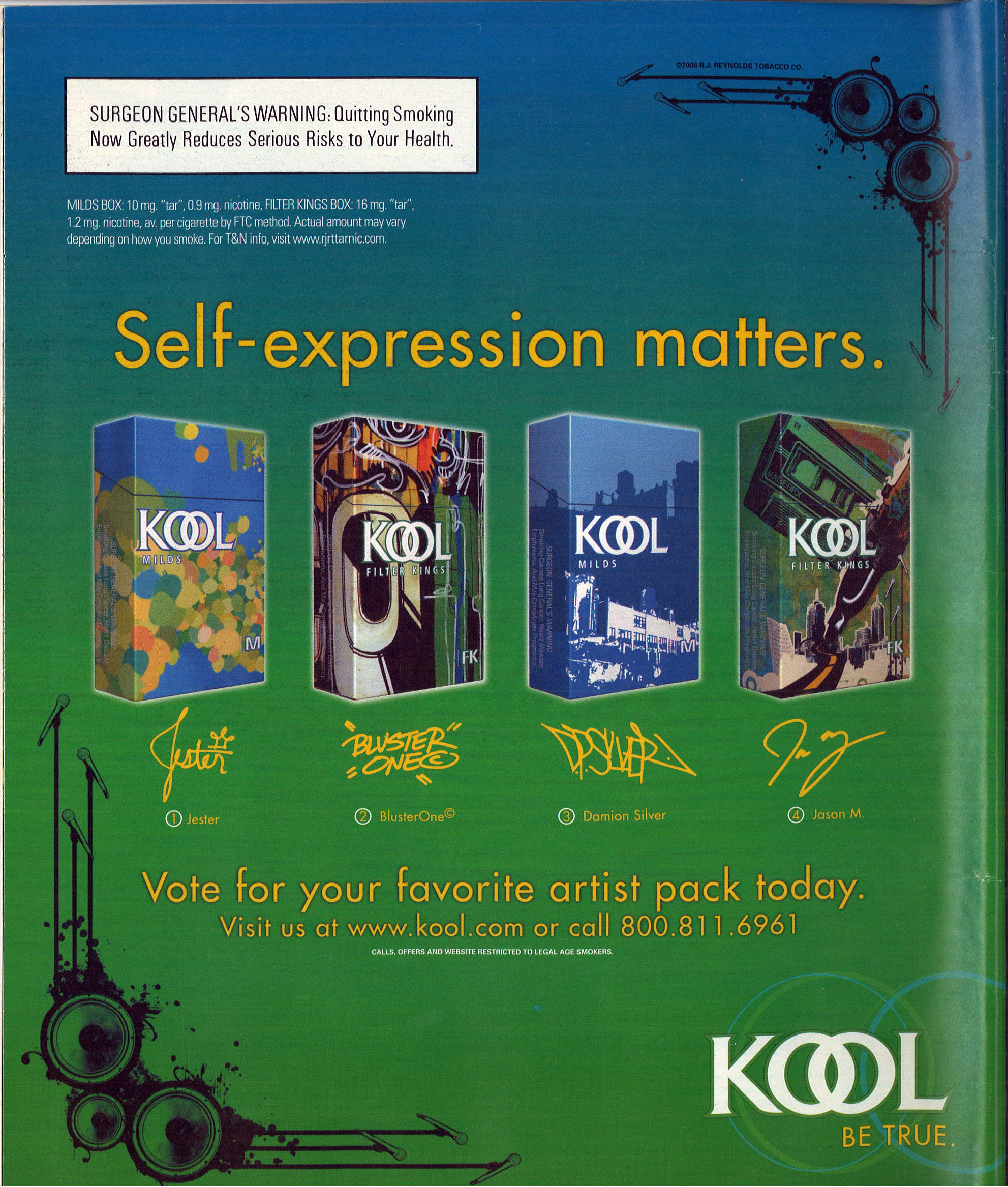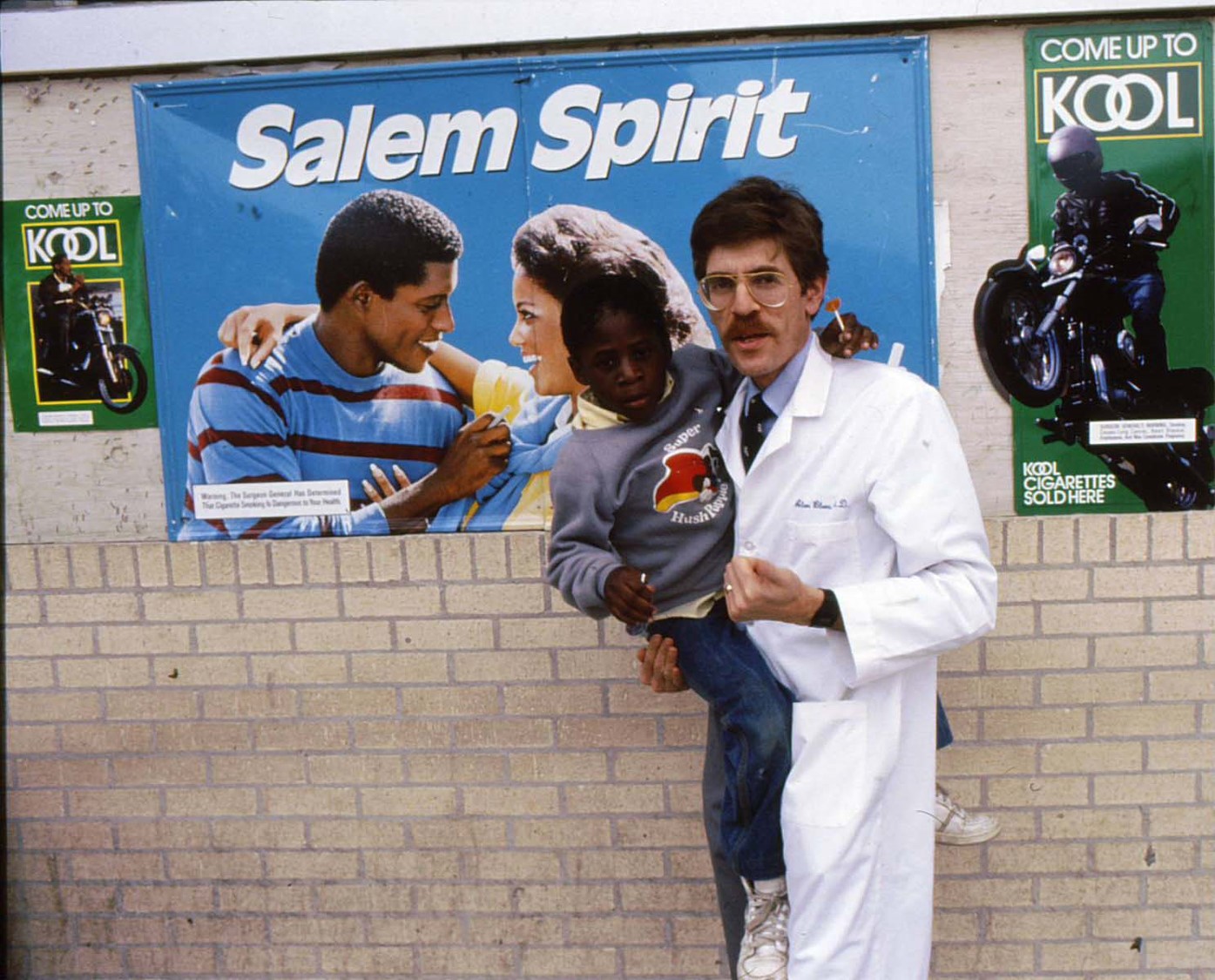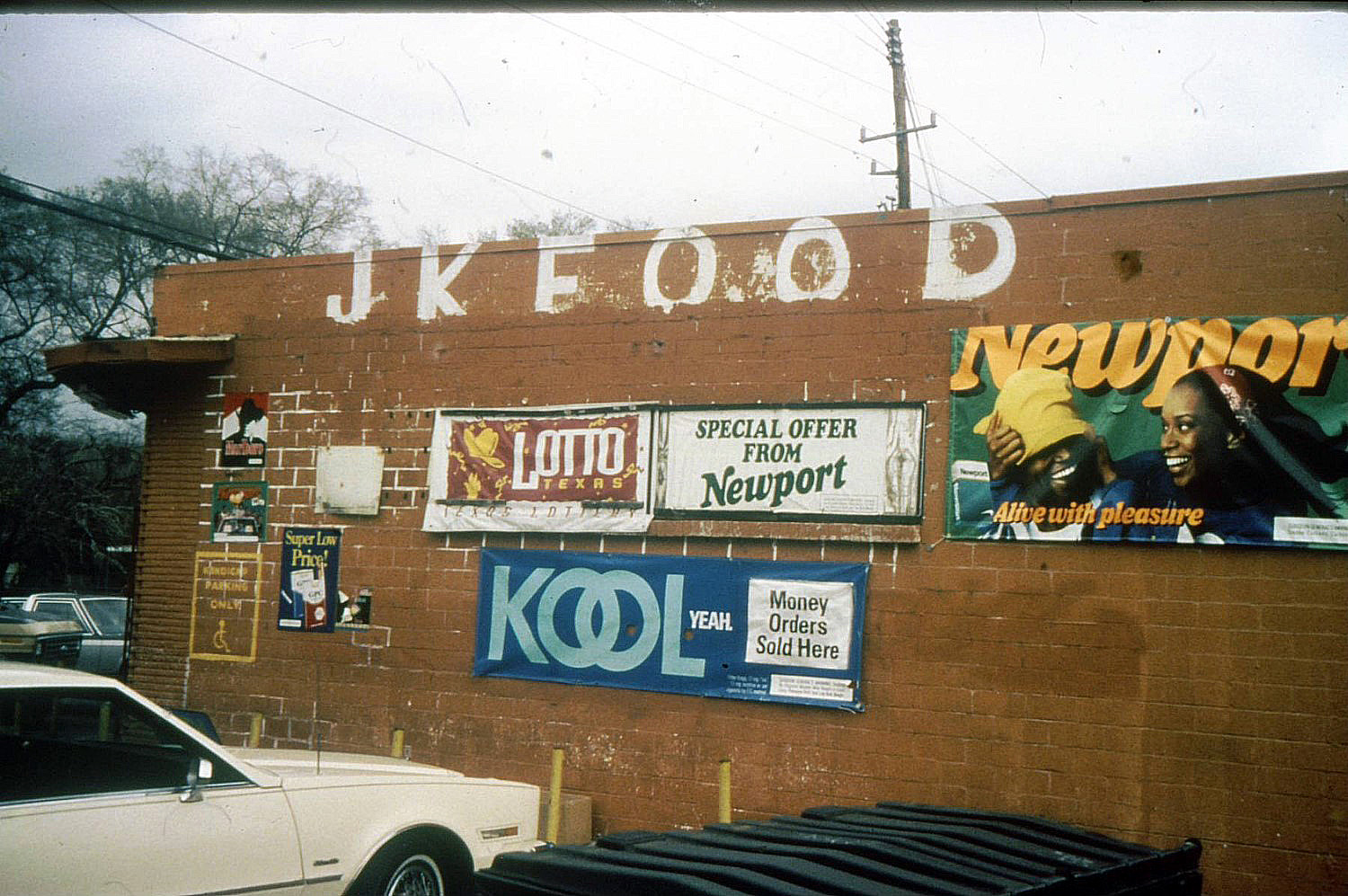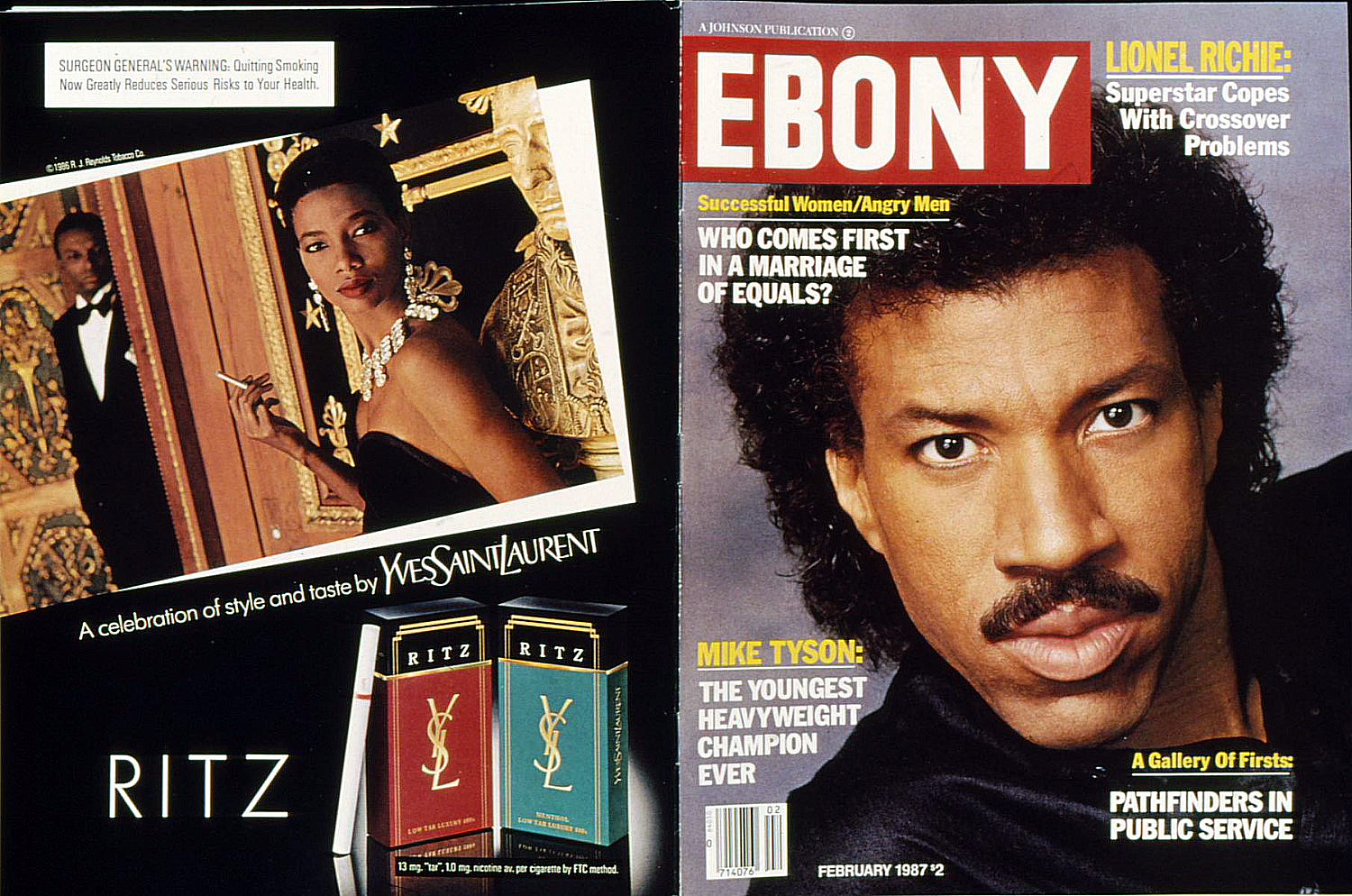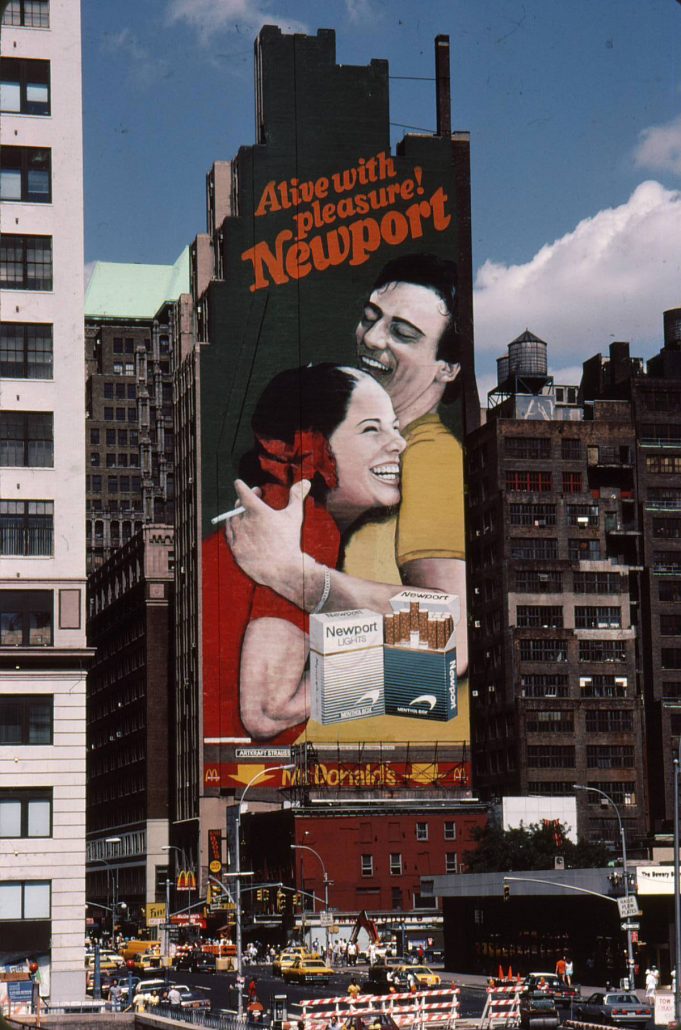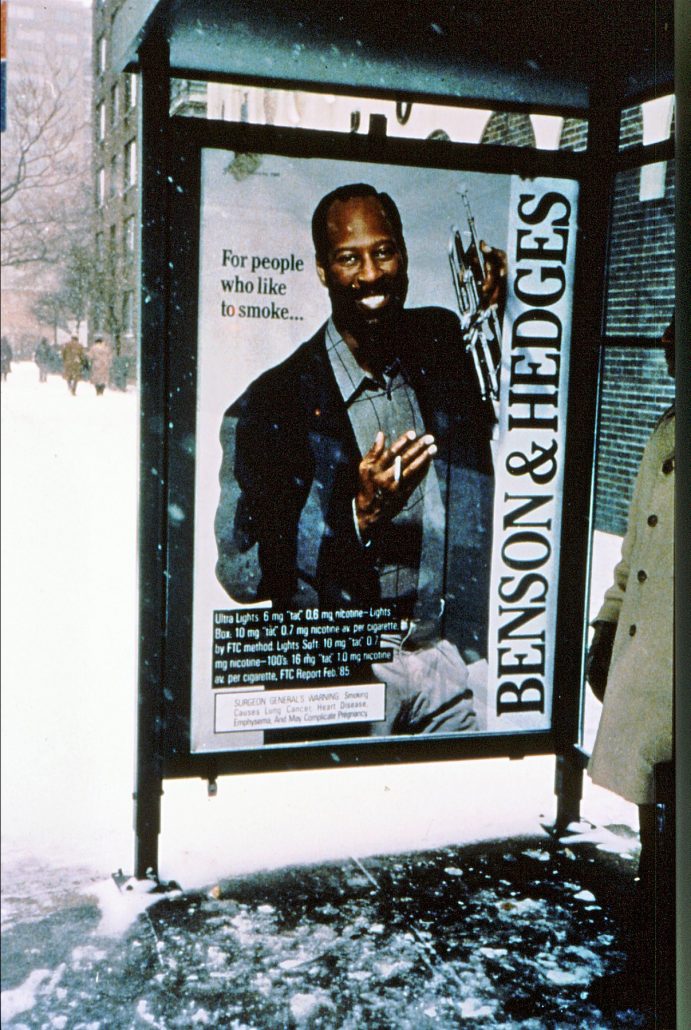- Minorities & Smoking – Home
- Taking Notice
- The Power of Tobacco Marketing ▼
- A History of Marketing Menthol to Minorities
- Supporting and Suppressing Minority Communities ▼
- Targeting Latinos
- Targeting Minority Women: A Marginalized Market
- Family Smoking Prevention and Tobacco Control Act
- The DOC Response
- Recent Struggles
“Self-expression matters.”
Kool advertisement featuring cigarette packs designed by graffiti artists
Rolling Stone, page 34
March 9, 2006
Alan Blum, MD, holding African-American child in front of Salem and Kool signs on exterior wall of store, Houston, Texas
Photograph
1987
Newport and Kool banner advertisements on exterior wall of convenience store, Houston, Texas
Photograph by Alan Blum, MD
Circa 1990
“Nothing Sells to Black Consumers Better”
Advertisement for Ebony magazine
The New York Times, page D9
May 14, 1990
“Alive with pleasure!”
Photograph by Alan Blum, MD, of painted Newport advertisement on tall building, New York City
1983
The Power of Tobacco Marketing
Using Mass Media to Promote Indiscriminately
One of the unpredictable, untoward effects of the removal of cigarette advertising from television in 1971 was the shift of some of the cigarette makers’ marketing budgets to minority-owned newspapers and magazines. Few magazines have been aimed exclusively at an African-American readership, but the two with the largest circulations – the weekly Jet and the monthly Ebony, both published by Johnson Publishing Company in Chicago until the company was sold in 2016 – contained cigarette advertisements in nearly every issue, and neither ever published an article focusing on the impact of cigarette smoking in the African-American community. A similar situation existed in the approximately 100 African-American-oriented newspapers in the United States and Caribbean region in the latter half of the 20th century. The result was that a substantial portion of the African-American press never published news articles or editorial comment antithetical to tobacco use and promotion. To the contrary, an advertisement in Ebony in June 1992 for Nabisco Foods Group, a subsidiary of RJR Nabisco (makers of Salem, More, Winston, and other cigarette brands heavily marketed to African Americans), saluted the magazine’s publisher, as well as seven other African-American entrepreneurs, as “role models to our nation’s youth and as inspiration to all of us.” In addition to utilizing these forms of mass media to promote their products to all areas of American society, billboards and signs in sports arenas and stadiums were also commonplace until the 1990s.
More Images: Tobacco Marketing
Contact
Alan Blum, M.D., Director
205-348-2886
ablum@ua.edu
© Copyright - The Center for the Study of Tobacco and Society


